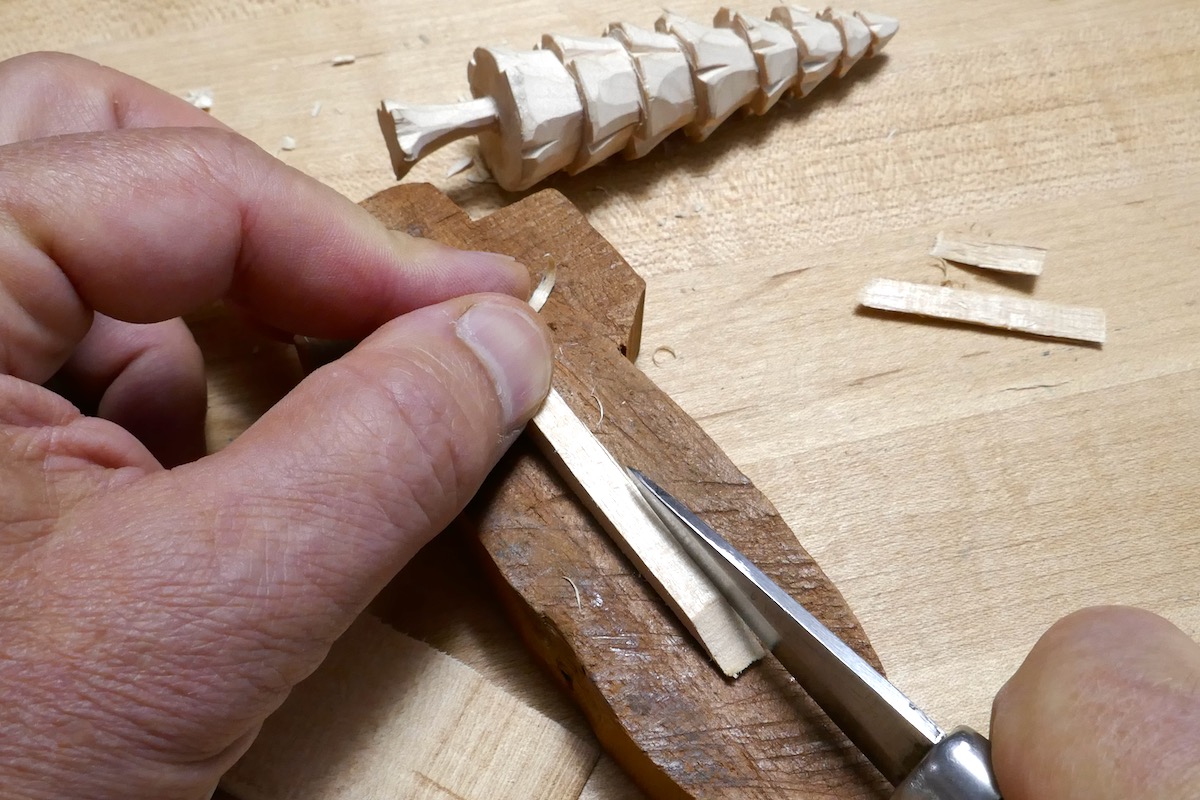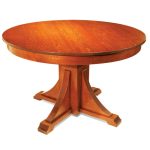We may receive a commission when you use our affiliate links. However, this does not impact our recommendations.

Attach the tree to the base.
Part 1: Introduction • Part 2: Push and Peel Knife Maneuvers • Part 3: Parting and Pulling Techniques • Part 4: Rounding the Tree • Part 5: Sculpting the Branches
Now that we have finished creating the tree, it’s time to plant it. You have several options for creating a base – shaping a flat, cloud-like plate resembling a patch of soil or finding a scrap piece that mimics a bluff or hill.
To anchor the tree, I typically use a ready-made dowel or craft one from scratch. For a custom dowel, I take a piece of basswood scrap slightly larger than the intended dowel’s hole diameter. Generally, the dowel should be about half or a bit thicker than the trunk’s thickness.
 I split the scrap, form a short beam, and then press it to extrude this beam to the right diameter using a dowel maker plate. Of course, you can shape the beam with other tools, such as files or sandpaper, but since I have a dowel-making plate, I prefer using it.
I split the scrap, form a short beam, and then press it to extrude this beam to the right diameter using a dowel maker plate. Of course, you can shape the beam with other tools, such as files or sandpaper, but since I have a dowel-making plate, I prefer using it.











After I finish making the dowel, I stage the placement of the tree on the base.

A bit to the right.

A bit to the left.
Once I am happy with the location, I drill two holes – one in the tree trunk and one in the base.



Now, all that is left is to glue the tree in place.


One last thing. Many like to give the tree’s foliage a wash of green color. To do so, dilute some acrylic paint in water and paint the branches. Wait for the first coat to dry, and consider repainting the foliage with a different hue of green to add depth.
By now, you’ve completed our short but comprehensive whittling series, in which you have learned how to hold and use the knife safely and effectively. I promise to return with more whittling projects in the coming weeks to provide more ideas and inspiration to encourage you to continue exploring the wonderful world of woodcarving. Stay tuned for more!
Here are some supplies and tools we find essential in our everyday work around the shop. We may receive a commission from sales referred by our links; however, we have carefully selected these products for their usefulness and quality.








